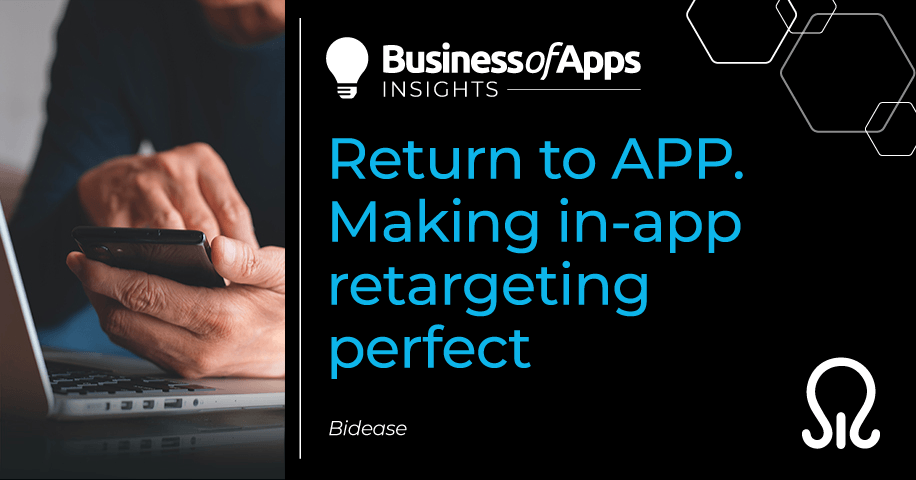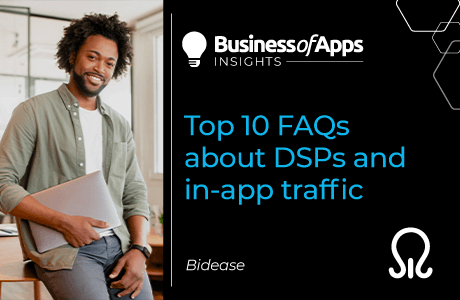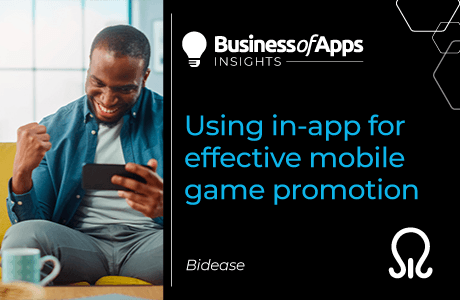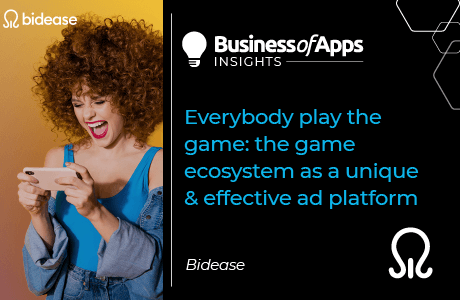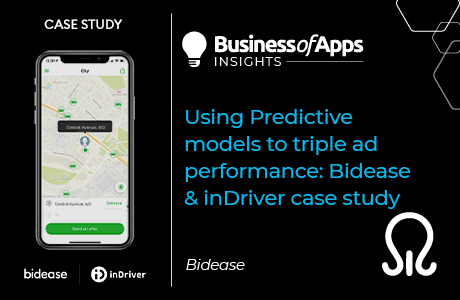We believe it’s no secret to anyone that retargeting is a really effective way of communicating with any app’s target audience. After all, if a user has already shown interest in the app, why not make this relationship last? You should at least try to win back the users if they leave and keep friendly relations with those using the app on a regular (or not-so-regular) basis.
In this article, we will cover the key points of retargeting through our DSP. Bidease definitely has something to share!
So, let’s go!
How do I start retargeting through DSP?
First, we need to understand what audience we are retargeting, that is, the advertiser needs to hand over their audience, i.e. the users who have the advertiser’s application installed.
At the next stage of integration, the advertiser needs to correctly set up the transfer of all significant events from their app to their mobile tracker and provide us with partner access. They also need to set up an automatic transfer of all installs and in-app events to our platform.
Why do you need this? You need this to run ad campaigns effectively rather than blindly and most importantly, to personalize ad impressions as much as you can. Let us say the user performed action A but not B, or performed both A and B but never made it to action C. Knowing at what stage of the sales funnel the user dropped out, we can gently remind them about the application and forgotten purchase with the most relevant, appropriate and personalized advertising message.
Just as with in-app UA campaigns, retargeting also has a test period.
What about the audience?
As we mentioned earlier, an advertiser’s #1 mission is to hand over all of their audience to us for retargeting. It is very important to correctly set up all significant events in the mobile tracker (providing us with partner access) as well as the automatic transfer of all installs and in-app events to our platform.
Where will your ad be seen?
In general, when running retargeting campaigns, both with and without a model, we seek to make the best use of the inventory at hand while keeping in mind the unique characteristics of the advertised product.
If we see a discrepancy in performance across different traffic sources, we promptly turn off the underperforming ones. Here, we focus on traffic quality: click-to-conversion CR and conversion-to-target action CR. To assess traffic quality, we also focus on the i2c (impression-to-conversion) metric, i.e. the percentage of impressions that led to conversions.
What goes on under the hood?
Just like in UA campaigns, you can use all kinds of manual settings in retargeting. By manual settings, we mean that while the campaign is collecting enough statistically significant data for predictive algorithms to be trained on, we work based on the experience, expertise and logic of our media buyers, continuously analyzing campaign results.
While the information is being collected, we can set the necessary daily/monthly/hourly caps, and use any bid selection tools, look-alike models or predictive models from our previous UA campaigns for this advertiser.
We also do creatives
We have an in-house creative production team that develops creatives for our advertisers. If needed, advertisers can develop their own creatives and send them to us.
Depending on the app, traffic and advertiser goals, we can use native banners, full-screen Interstitials, full-screen videos, native videos and playable ads as well as ad format combinations. As you can see, in-app provides a great opportunity to use all the engaging and high-conversion ad formats.
As we mentioned earlier, personalized ad creatives greatly increase retargeting effectiveness. Our creative production team has extensive expertise in creating various types of ad messages tailored for a specific target action. For example, if the advertiser’s goal is to get more purchases, we will be using a variety of visuals focusing on discounts, promotions and promo codes.
How do we optimize?
If we have a new advertiser who has not yet cooperated with us, we train look-alike models for retargeting campaigns. However, if we have already worked with that client (e.g. run UA campaigns), we train the predictive ones.
Look-alike models are based on the information we get from the advertiser – installs, purchases, and other significant events. To make this data usable for building a look-alike model, the advertiser needs to configure data transfer correctly to avoid errors. There is always a technical specialist on our side supervising the integration process, so there are usually no difficulties involved.
Predictive models are based on the traffic we have already acquired for a particular advertiser.
The main difference between look-alike and predictive models is that the latter uses actual data from the advertiser’s current campaigns. A predictive algorithm analyzes not just an install as such, as look-alike models do, but the entire chain of events that led to the install, allowing for all kinds of additional parameters. Unlike it, a look-alike model only operates conversion probabilities.
Retargeting ad campaigns can be optimized for any events provided by the advertiser. Most importantly, the platform has to get enough conversions for each event in question. A predictive model will need about 800-1,000 actual conversions from current campaigns conducted on our platform, and a look-alike model – about 10,000 conversions of any kind that the advertiser hands over to us upon integration.
Conclusion: Why is in-app retargeting a good solution?
In-app retargeting is an incredibly effective and fairly easy-to-use tool for communicating with users who have previously shown interest in the app. It works well for almost any vertical: e-commerce, gaming, finance, entertainment, food & drinks, travel, taxi, dating and more. Besides, it is quite useful for products that have drained their main traffic sources but still want to keep going at the same pace.
With inventory all over the world, quality audiences, engaging ad formats and flexible targeting options, in-app retargeting is a fast way for advertisers to achieve good results.



